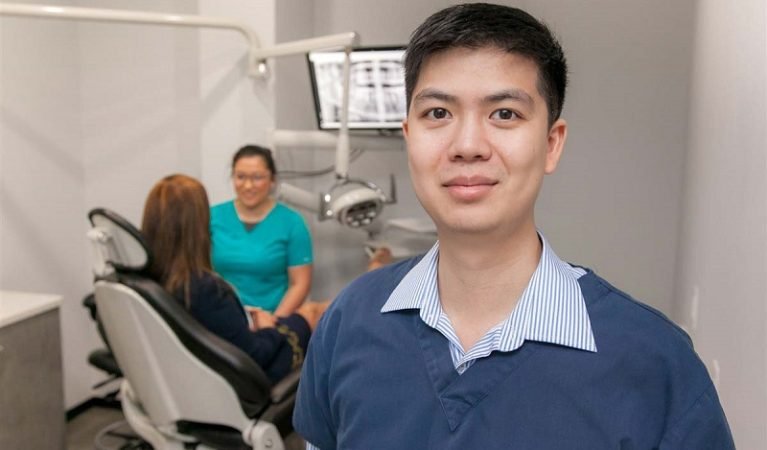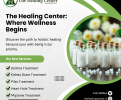The Advantage of Invisalign and Dental Bonding: Why Choose These Treatments for a Perfect Smile?

Creating a confident, beautiful smile is within reach thanks to modern cosmetic dentistry techniques like Invisalign Near Me and dental bonding. These popular procedures are minimally invasive and effective, catering to both the aesthetic and functional needs of patients. If you’re considering options for a better smile, you may wonder: What are the advantages of Invisalign and dental bonding? Here, we’ll dive into how each option works, their unique benefits, and why choosing these treatments might be your best decision for a stunning smile.
1. What Is Invisalign and How Does It Work?
Invisalign is a modern approach to teeth straightening, using a series of clear, custom-made aligners that gradually shift your teeth into the desired position. Unlike traditional metal braces, Invisalign aligners are nearly invisible, which makes them an attractive choice for both teens and adults seeking a more subtle orthodontic solution.
The Invisalign treatment process starts with a 3D scan of your teeth to map out a precise, step-by-step plan tailored to your unique needs. This virtual plan shows you how your smile will evolve during treatment, giving you a preview of your end results before you even begin. Every few weeks, you’ll switch to a new set of aligners that continue moving your teeth toward your goal.
Key Benefits of Invisalign:
- Invisible Appearance: Invisalign aligners are transparent and difficult to detect, making them perfect for those who want a discreet option.
- Comfortable Fit: Made from a smooth plastic material, the aligners are more comfortable than traditional braces, which can sometimes irritate the gums and inner cheeks.
- Easy Maintenance: The aligners are removable, allowing you to eat, brush, and floss with ease.
2. What Is Dental Bonding and How Does It Work?
Dental bonding is a quick, cost-effective way to repair minor imperfections in your teeth. Whether it’s a chipped tooth, gap, discoloration, or slightly misaligned tooth, dental bonding offers a solution to enhance the appearance of your smile without the need for extensive treatment. The process involves applying a tooth-colored resin material to the affected area, then shaping, hardening, and polishing it for a seamless blend with your natural teeth.
The procedure is simple, usually taking around 30 to 60 minutes per tooth, and often doesn’t require anesthesia unless bonding is being done close to a tooth’s nerve.
Key Benefits of Dental Bonding:
- Affordability: Dental bonding is one of the most cost-effective cosmetic dental procedures.
- Quick Procedure: The process is fast and can be completed in one visit to the dentist.
- Natural Appearance: The bonding material is tinted to match your teeth color, creating a natural look.
3. What Are the Advantages of Invisalign Over Traditional Braces?
When choosing between Invisalign and traditional braces, it’s essential to consider the advantages each method offers. Invisalign has gained significant popularity due to its discreet nature and ability to provide results without the inconvenience of wires and brackets.
Discreet Appearance
With Invisalign, you don’t need to worry about the visibility of braces, which can sometimes make people self-conscious. The clear aligners make it possible to correct your smile without drawing attention.
No Food Restrictions
Traditional braces come with a list of foods to avoid to prevent breaking brackets or bending wires. Invisalign aligners are removable, so you can enjoy all your favorite foods without compromising your orthodontic progress.
Easier Oral Hygiene
Invisalign allows for easy brushing and flossing, reducing the risk of plaque buildup that sometimes occurs with braces. You simply remove the aligners, clean your teeth as usual, and put the aligners back in place.
Shorter Treatment Time
In some cases, Invisalign can work faster than traditional braces, with an average treatment time of 12-18 months. The timeline depends on the complexity of the case, but Invisalign’s technology and design allow for efficient teeth movement.
4. What Are the Advantages of Dental Bonding Over Other Cosmetic Procedures?
Dental bonding is a fantastic option for minor cosmetic fixes, and it stands out for several reasons compared to alternatives like veneers or crowns.
Cost-Effectiveness
Bonding is generally more affordable than veneers or crowns. It’s an excellent option for individuals seeking to improve their smile on a budget without sacrificing quality results.
Minimal Enamel Removal
Unlike veneers, which require a thin layer of enamel removal, bonding typically involves little to no alteration of the natural tooth. This makes bonding a more conservative treatment, preserving the integrity of your natural teeth.
Quick Turnaround Time
Dental bonding can be done in one dental visit, making it highly convenient for busy individuals. Unlike veneers, which require multiple visits and waiting time for lab creation, bonding offers same-day results.
5. Why Choose Invisalign and Dental Bonding Together?
In some cases, Invisalign and dental bonding can work together to create a flawless smile. Patients often complete Invisalign treatment to straighten their teeth and then opt for bonding to touch up any remaining imperfections. This combination approach can yield remarkable aesthetic results, creating both a well-aligned and beautifully contoured smile.
6. Who Is a Good Candidate for Invisalign and Dental Bonding?
While Invisalign and dental bonding are versatile solutions, they’re not necessarily suitable for every patient. Here are some factors to consider:
Invisalign Candidates:
- People with mild to moderate alignment issues.
- Patients committed to wearing their aligners for 20-22 hours per day.
- Individuals seeking a nearly invisible orthodontic solution.
Dental Bonding Candidates:
- Those with minor cosmetic issues, such as small chips, discoloration, or gaps.
- Patients who prefer a quick, affordable solution.
- Individuals not experiencing significant structural tooth damage.
Your dentist can help you determine if these treatments are suitable for your smile goals based on a comprehensive dental evaluation.
7. How to Maintain Results After Invisalign and Dental Bonding?
Achieving your desired smile is an exciting accomplishment, but maintaining it is equally important. Proper aftercare helps you extend the longevity of your dental bonding and retain the results of your Invisalign treatment.
For Invisalign
After finishing Invisalign treatment, most patients are provided with retainers to prevent teeth from shifting back to their original positions. Wearing these retainers as recommended by your dentist is essential for maintaining your new alignment.
For Dental Bonding
Bonding material isn’t as strong as natural tooth enamel, so taking precautions is important. Avoid chewing on hard objects (like ice or pen caps) and limit foods and beverages that could stain the bonding material, such as coffee and red wine. Practicing good oral hygiene with regular brushing, flossing, and dental checkups will also help maintain your bonding results.
8. Are There Any Risks or Drawbacks to Invisalign and Dental Bonding?
As with any dental procedure, there are a few considerations to keep in mind:
- Invisalign Compliance: Invisalign requires a high level of patient commitment to wearing the aligners consistently. Skipping wear time can prolong the treatment or affect results.
- Bonding Durability: Dental bonding is durable but may not last as long as other options, such as veneers, depending on wear and care habits. Bonding might require touch-ups every few years, especially for areas subject to regular pressure.
9. Final Thoughts: The Advantage of Choosing Invisalign and Dental Bonding
Invisalign and dental bonding offer a unique blend of convenience, effectiveness, and aesthetic appeal for those seeking a perfect smile. With Invisalign, you gain a discreet and comfortable way to achieve aligned teeth, while dental bonding provides a quick, cost-effective solution to correct imperfections. Together, these treatments can help you achieve a polished, confident smile that enhances both your appearance and self-esteem. Consulting with a qualified dentist will allow you to explore these options fully and decide on the best path to achieving your ideal smile.
YOU MIGHT ALSO LIKE
ABOUT ME

Welcome to my blog Artcle slurp. We share latest article for all niche. If you want to publish your article then mail me on articleslurpblog@gmail.com
































